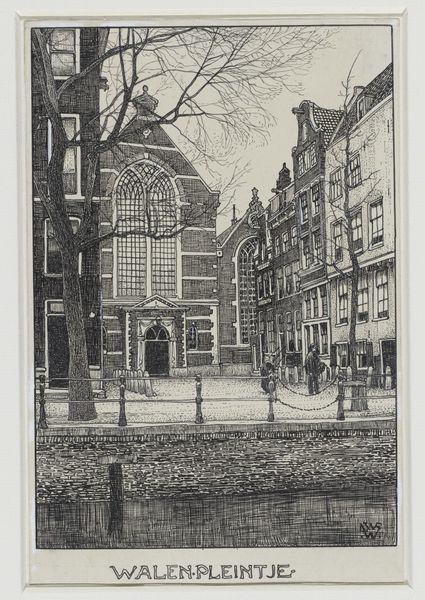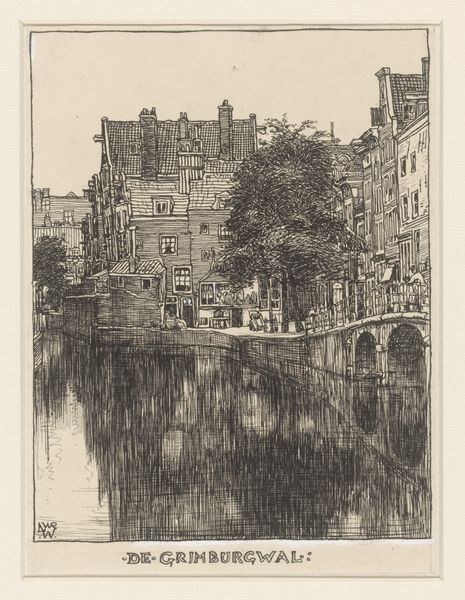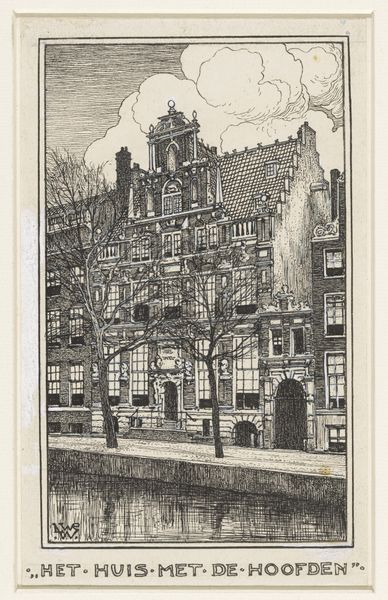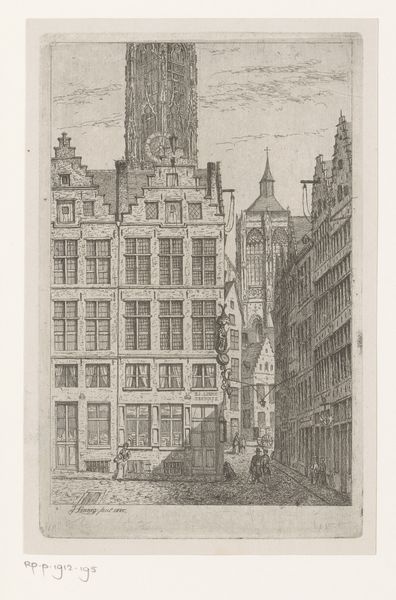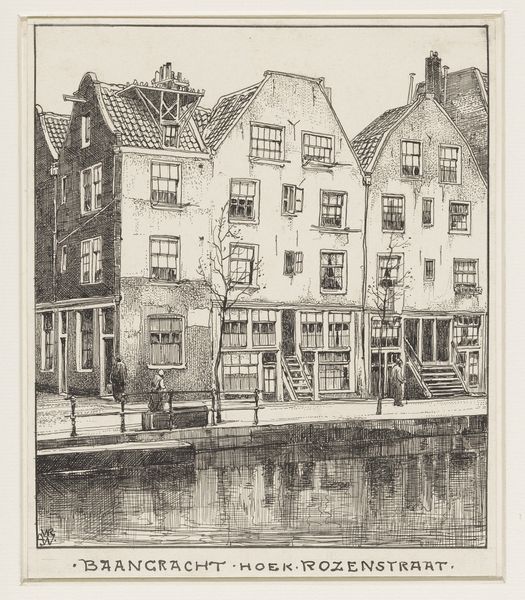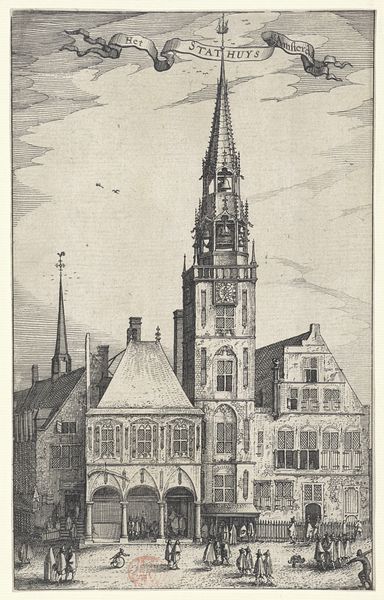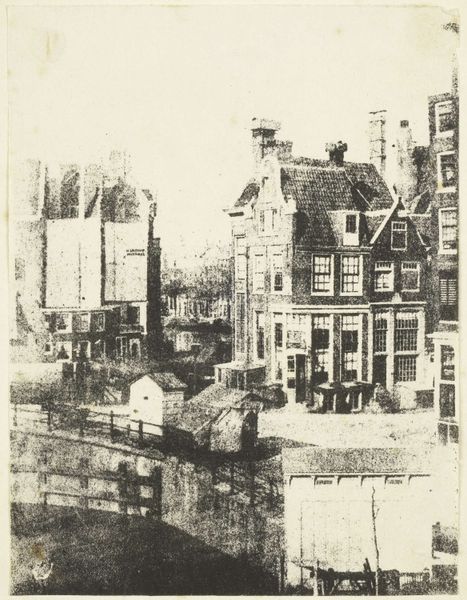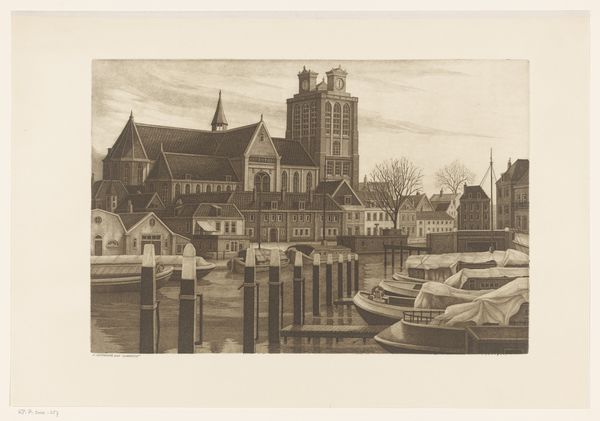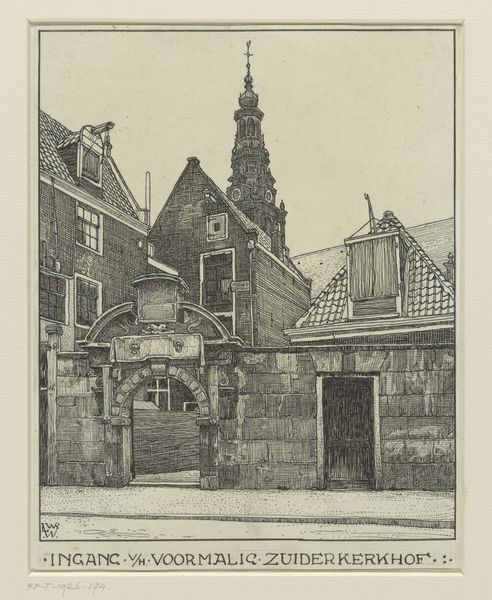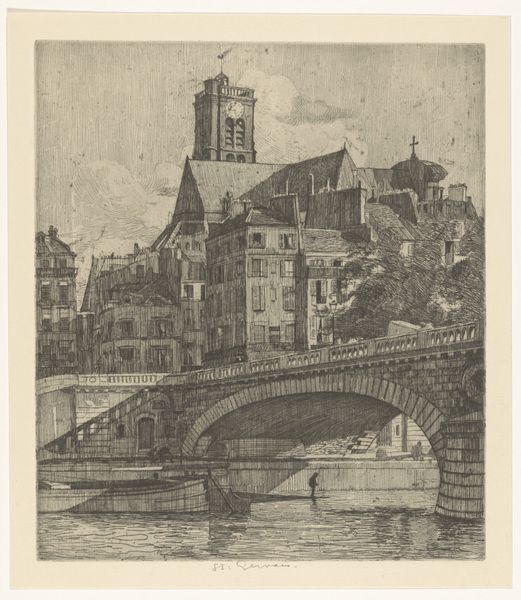
drawing, print, etching, ink, pen
#
drawing
# print
#
pen sketch
#
etching
#
pencil sketch
#
ink
#
line
#
pen
#
cityscape
#
realism
Dimensions: height 241 mm, width 177 mm
Copyright: Rijks Museum: Open Domain
Curator: Before us hangs Willem Wenckebach’s “De Oude Kerk te Amsterdam,” created between 1870 and 1926. The piece combines drawing and printmaking, using pen, ink, and etching techniques to depict a cityscape. Editor: Immediately, I’m struck by the image’s somber yet meticulous nature. The artist's sharp, insistent lines evoke a sense of imposing history—there's such an attention to form and surface detail, almost hyper-realistic. Curator: The lines, precisely as you mentioned, constitute the primary language of the work. Notice how Wenckebach masterfully uses varying densities of etched lines to convey light and shadow. It is really skillful execution that draws one's eye across the composition. Editor: But doesn't that sharp contrast serve to amplify a certain visual tension? The Old Church looms large in the background, while the reflections in the canal water below feel distorted and unsettling, suggesting that the very foundations of this rigid social structure are threatened by modernity and rapid cultural transformation. The very site appears burdened by its own history. Curator: A compelling point. Looking at the rendering of the church's architecture itself, one can clearly observe how the detailed and realistic lines are designed to showcase the solid architectural components. I am not so sure it evokes any feeling beyond pure representational accuracy. The pen lines in particular reinforce a strong sense of depth. Editor: But can’t the realism function as more than mere representation? Given the period in which the etching was created, the detailed focus on the city—particularly a religious site with the weight of colonial history behind it—draws attention to the politics inherent in urban spaces. Who belongs, and who is excluded from that idealized view? The very cleanliness, devoid of the messiness of everyday life, implies a particular, sanitized narrative. Curator: A convincing, albeit cynical, reading. For me, what stands out in "De Oude Kerk te Amsterdam" is the artist’s facility with line. It invites the viewer to appreciate how simple forms, rendered carefully, can create incredibly evocative imagery. Editor: And for me, this image serves as a potent reminder that no image is innocent. Wenckebach's Amsterdam whispers volumes about the complexities and power dynamics embedded within our lived environments.
Comments
No comments
Be the first to comment and join the conversation on the ultimate creative platform.
